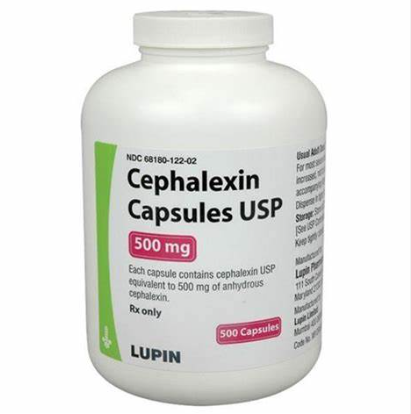Cephalexin: A Comprehensive Guide on Uses, Side Effects, Precautions, Interactions, Overdose, and Capacity
Cephalexin: A Comprehensive Guide on Uses, Side Effects, Precautions, Interactions, Overdose, and Capacity
Cephalexin, often sold under the brand name Keflex, is a widely used antibiotic belonging to the cephalosporin class. It plays a crucial role in the treatment of various bacterial infections. In this extensive article, we will delve into the world of Cephalexin, providing a comprehensive guide on its uses, potential side effects, precautions, drug interactions, overdose risks, and the capacity of this antibiotic to combat infections effectively.
Understanding Cephalexin
1. What is Cephalexin?
Cephalexin is an antibiotic medication that falls under the cephalosporin class. It is used to treat a wide range of bacterial infections, including respiratory tract infections, skin and soft tissue infections, urinary tract infections, and more. Cephalexin works by interfering with the formation of the bacterial cell wall, ultimately leading to the destruction of the bacteria.
2. Uses of Cephalexin
Cephalexin is prescribed for various bacterial infections, including but not limited to:
- Respiratory Tract Infections: Such as bronchitis and pneumonia.
- Skin and Soft Tissue Infections: Including cellulitis and impetigo.
- Urinary Tract Infections: Like cystitis and pyelonephritis.
- Bone and Joint Infections: Osteomyelitis.
- Ear, Nose, and Throat Infections: Such as tonsillitis and sinusitis.
- Dental Infections: Dental abscesses.
Dosage and Administration
The dosage and administration of Cephalexin depend on the type and severity of the infection, as well as the patient's age and weight. It is crucial to follow your healthcare provider's instructions or the prescription label carefully.
- Dosage Range: The typical adult dose of Cephalexin ranges from 250 mg to 500 mg, taken every 6 to 12 hours, depending on the severity of the infection.
- Pediatric Dosing: The dosage for children varies based on their weight and the specific infection. It is determined by the healthcare provider.
Cephalexin is usually administered orally, in the form of capsules or liquid suspension. It is essential to complete the full course of antibiotics as prescribed, even if symptoms improve before the medication is finished.
Potential Side Effects
While Cephalexin is generally well-tolerated, it can cause side effects in some individuals. Common side effects may include:
- Nausea
- Diarrhea
- Vomiting
- Stomach upset
- Skin rash
If you experience severe or persistent side effects, contact your healthcare provider promptly. Allergic reactions are rare but serious and should be addressed immediately.
Precautions and Contraindications
Before using Cephalexin, it is essential to consider the following precautions:
- Allergies: Inform your healthcare provider if you have a history of allergies to cephalosporin antibiotics or any other medications.
- Medical History: Disclose your medical history, including kidney disease and gastrointestinal disease, as it may impact your response to the medication.
- Pregnancy and Breastfeeding: Consult your healthcare provider if you are pregnant, planning to become pregnant, or breastfeeding. Cephalexin is generally considered safe during pregnancy when benefits outweigh risks.
Drug Interactions
Cephalexin may interact with other medications, potentially affecting their effectiveness or increasing the risk of side effects. Inform your healthcare provider about all medications, supplements, and herbal products you are taking, especially:
- Blood thinners (e.g., warfarin)
- Probenecid
- Metformin
Your healthcare provider will consider these interactions when prescribing Cephalexin and adjust your treatment plan as needed.
Overdose
In the event of an overdose of Cephalexin, seek immediate medical attention or contact a poison control center. Symptoms of overdose may include severe nausea, vomiting, diarrhea, and abdominal cramps.
Capacity and Storage
Cephalexin should be stored at room temperature away from moisture and light. Follow storage guidelines provided by the manufacturer and healthcare provider.
Conclusion
Cephalexin, a cephalosporin antibiotic, is a valuable tool in the treatment of various bacterial infections. Its effectiveness, coupled with its generally favorable side effect profile, makes it a commonly prescribed antibiotic for a wide range of clinical conditions.
It is crucial to use Cephalexin precisely as prescribed by a healthcare provider, complete the full course of antibiotics, and be aware of potential side effects and interactions. Cephalexin can be highly effective in combating infections when used appropriately, contributing to improved patient outcomes and overall well-being.
Always consult with a healthcare professional for guidance on the use of Cephalexin and any questions or concerns related to your specific medical condition. By following proper medical advice and treatment guidelines, you can harness the full capacity of Cephalexin to combat bacterial infections effectively.

















No comments